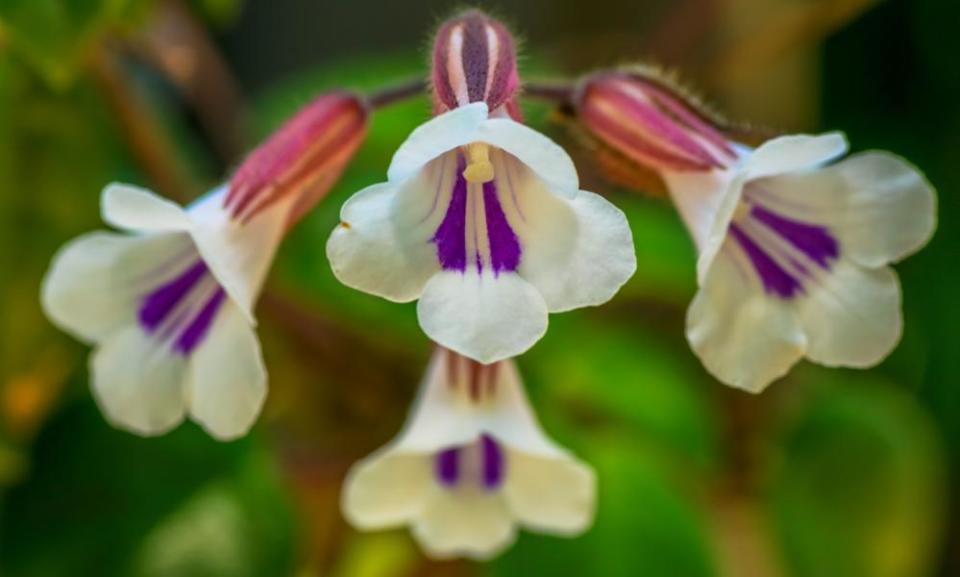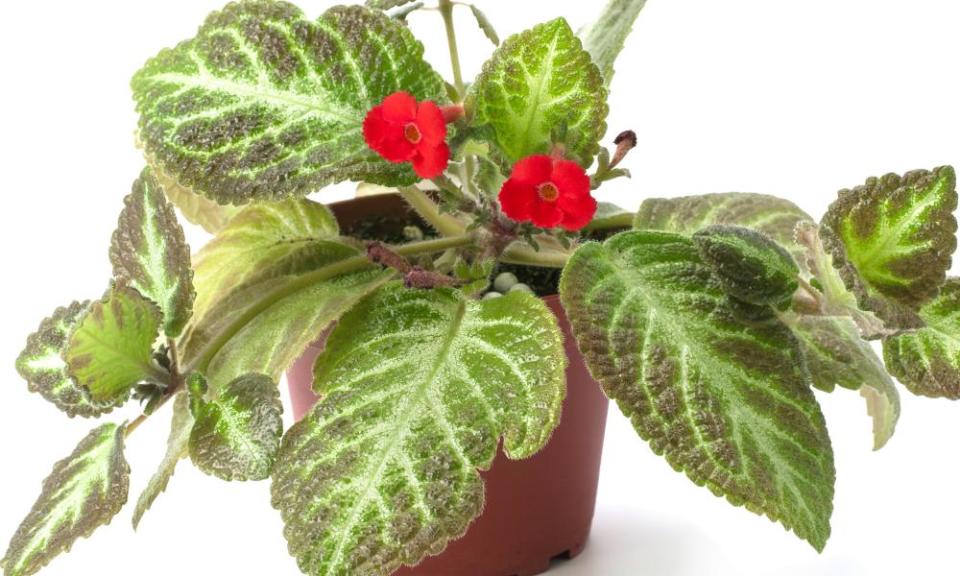Bring a little colour back to indoor plants

With sales soaring up to 500% in the first UK lockdown alone, houseplants are back in a huge way. Yet unlike in their 1970s heyday, the species currently in vogue are almost exclusively the foliage types. In fact, aside from the ubiquitous moth orchid, it can be tricky to find any flowering species on either the shelves of achingly cool plant boutiques or in the glossy feeds of Instagram “plant-fluencers”.
While it is true that many of the old-school flowering species, from miniature roses and chrysanths to blousy begonias, have a whiff of the crocheted doily about them, there is a family of overlooked flowering houseplants that are perfect for modern interiors. I present to you: gesneriads.

If you can pick only one, I’d go for Deinostigma tamiana, which is the new, scientific name for what we used to call chirita. This beautiful species from the jungles of Vietnam and southern China produces a seemingly never-ending conveyor belt of delicate white flowers with painted purple throats, held up high on slender stems. As long as you keep their rosettes of green leaves from getting water-logged – which they really hate – they are ridiculously forgiving, too, and can be grown just like their close cousins the African violets, Saintpaulia.
Speaking of which, I think it’s a travesty that these plants, which graced pretty much every suburban front room when I was growing up, have fallen so desperately out of favour. OK, so the massive and frilly Saintpaulia mutations that suddenly rushed on to the market in the 1980s didn’t help matters. But if you scour the catalogues there are plenty of wondrous dwarf varieties with much more understated, elegant blooms that look, to me at least, like something straight out of a magical forest.
I love Saintpaulia ‘Chantaspring’ with its tiny, pale yellow flowers and pointed, deep-green leaves (in fact, I have just ordered six of these). If you want something a bit more striking, ‘Pixie Blue’ has the most arresting royal blue blooms that look as if they are made of silk. Both of these are rare examples of flowering plants that will reliably bloom in terrariums, while staying small enough to never outgrow them.
Finally, I highly recommend going online to track down the carpet plant Episcia cupreata, which creates a flat mat of fuzzy leaves that look like they have been embroidered with metallic thread. Spreading out in all directions on stolons, which produce mini plants, they look incredible spilling over the sides of pots set high on pedestals or in hanging baskets in shady spots. The bright red flowers that bloom on top of all these attributes make them almost impossibly beautiful. It’s astonishing to think these are now so hard to find today, despite being so popular just a few decades ago. I implore you to give any (or even better, all) of these a go this autumn and, I promise you, you’ll thank me in the months to come.
Follow James on Twitter @Botanygeek

 Yahoo Finance
Yahoo Finance 